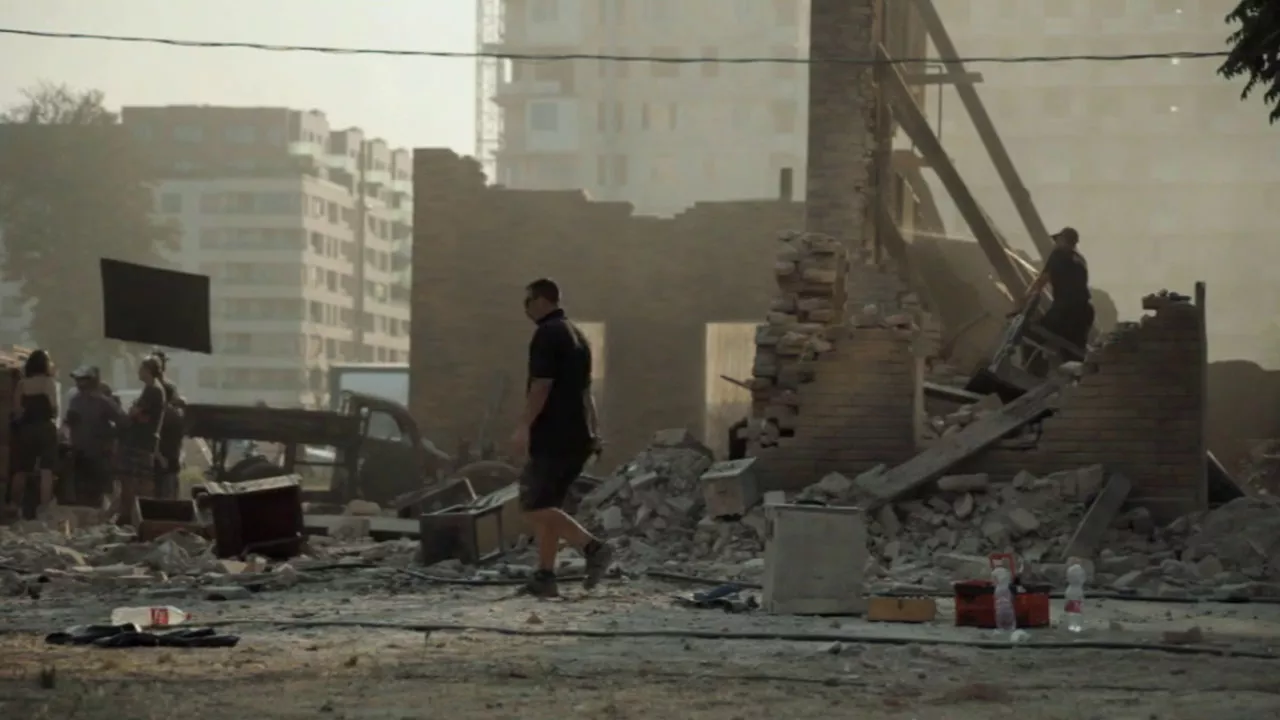Bővebben a filmről
PILLANATNYI 8 | TEMPORARY 8TH
IT, 2012, 53’, R | D: ZimmerFrei
Magyar és Angol nyelven, magyar és angol felirattal
A film a „Városportré / Ideiglenes városok” című dokumentumfilm-sorozat része, melyet a ZimmerFrei kollektíva készített nagyvárosok olyan körülhatárolt helyszínein, melyek épp valamilyen változáson, átalakuláson mennek keresztül. Budapest 8. kerületének címezve, a film egy népszerű környékről szól, ahol a legjelentősebb átalakítások 2006-ban kezdődtek meg a lakók kiköltöztetésével és az épületek romba döntésével, ennek azonban a világgazdasági válság 2008-ban hirtelen megálljt parancsolt. A film készítésekor a megsemmisített épületek helyén üresség tátong, a széteső városszövet elszórt mozaikdarabkáiként, bármiféle rendeltetés vagy meghatározott funkció nélkül. Milyen sorsot kéne szánni ezeknek a privát vagy közterületeknek, melyeket jelenleg senki sem használ? A film bemerészkedik az elhagyott telkek, udvarok és lakások közé, hogy feltárja, miként alakítják a lakók saját környezetüket és ezzel együtt a városképet.
Budapest150: Hogyan változtak meg egyes városrészek az elmúlt évtizedekben?
A vetítést az Olasz Kulturális Intézet támogatja.
Language: Hungarian and English with English and Hungarian subtitles
The film is part of a series of documentaries called “City Portrait / Temporary Cities”, filmed by ZimmerFrei in very limited areas or single spots within large cities that are in the course of a changing process. The film is dedicated to the District 8 of Budapest, a popular neighbourhood where a major restructuring started in 2006 with displacements of inhabitants, demolitions and constructions but suddenly stopped in 2008 with the global economic crisis. The film depicts empty spaces with no defined destination, a mosaic of fractures in the urban fabric. What to do with these public and private spaces of non-use? The film ventures into the desert lots, yards and homes to find out how the inhabitants transform the common areas and the face of their own city.
Budapest150: How have our neighbourhoods changed in the past decades?
The screening is supported by the Italian Institute of Culture.
CORVIN VARIÁCIÓK | CORVIN VARIATIONS
HU, 2011, 39’, R | D: Klára Trencsényi
Magyar nyelven, angol felirattal
A 2003-ban indult Corvin-Szigony Projekt Közép-Európa egyik legnagyobb és legtöbbet díjazott városfejlesztési projektje volt. Egy 22 hektár alapterületű városrész teljes átalakulását tervezték Budapest 8. kerületében, ami a terület összes épületének lebontását tette szükségessé. Az önkormányzat és a befektetők egyaránt szerették volna felszámolni a nyomornegyedet, így több mint ezer, főleg roma családnak kellett elköltöznie, mert a megújuló területen nem engedhették volna meg, hogy lakást vegyenek vagy béreljenek. A film főszereplői azok a lakók, akiknek el kellett hagyni addigi otthonukat a fejlesztés miatt, és akik némi nosztalgiával vegyes kritikus hangvétellel idézik fel azt az életet, ami az egykori környék közösségeinek mindennapjait jellemezte. Ezek az emberek többé nem találkoznak egymással, csak a filmkészítő által létrehozott rekonstruált közegben.
Budapest150: Mi történt az átalakuló városnegyedeink lakóival?
Vetítés és beszélgetés Trencsényi Klára rendezővel.
Language: Hungarian film with English subtitles
The Corvin Project initiated in 2003 was the largest and most awarded Central European city development project. It envisioned the complete transformation of cca. 22 acres territory in the District 8 of Budapest, which implied the demolition of all buildings in the given area. Both the local government and the investor wanted to get rid of the “slums” by relocating more than one thousand families, mostly Roma, who could not afford buying property in the old-new area. The protagonists of the film are local residents who have been relocated in the course of the project – and who recall with certain nostalgia and criticism the life in the old neighbourhood and community. They no longer see each other – only in the reconstructed space created by the filmmaker.
Budapest150: What happened to the residents of our transformed neighbourhoods?
Screening and Q&A with director Klára Trencsényi.










